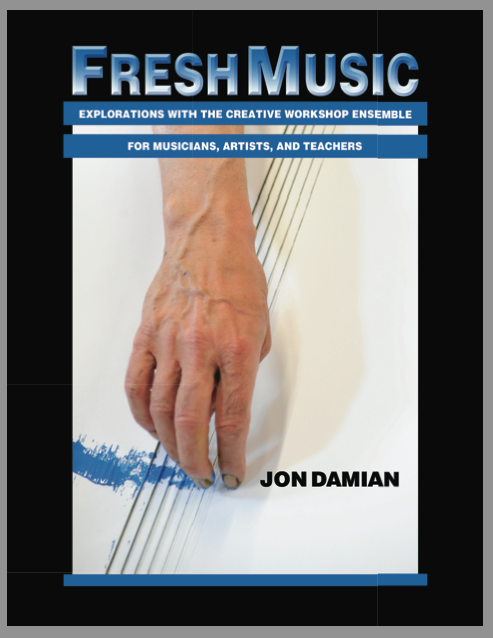
Firstly, a disclaimer. I’m in this book (Chapter 6, 10 and 11!)
My compositions that I wrote during my time as a student in Jon’s Creative Workshop Ensemble(CreW) at Berklee (Spring 2006) are documented in this book & a very cool fictionalised version of me is a character in the book. So, I probably am biased.
For a long time, I didn’t really think about writing a review of this book because I’m kind of part of it. However, I feel that this book is worth writing about, because it contains a lot of powerful and useful material for the creative musician.
Jon Damian is a legend at Berklee. Even before I became a Berklee student, I already was a fan of his previous book, The Guitarist’s Guide to Composing and Improvising (Berklee Press). That book helped me develop my understanding of the guitar in many ways. In fact, a song called “Girl In The Faded Photograph” from my 2004 debut album, Acoustic Gestures was inspired by the material in that book.
When I finally got to study with Jon, I was excited to learn directly from him. Nothing really beats studying with a master educator like Jon in person. But, this book is a great representation of the experience.
This isn’t a typical music book.
It’s far from being a dry theory-based text. It actually collects various exercises, experiments, experiences, stories, compositions, concepts, ideas that Jon taught and directed in his Creative Workshop Ensemble (CreW).
Iconic guitarists like Bill Frisell and Joe Cohn were in the very first CreW at Berklee in 1978. Around 2006, I was in the ensemble! After experiencing the “Live” version of the ensemble & reading (and applying) the book, I can say that this captures the spirit of what Jon did in the ensemble.
In the 171-page book, throughout the 15 chapters, Jon welcomes you into a 14-week experience mirroring the actual feel of the ensemble. Each chapter includes studies and assignments that can be used as class syllabus. Jon connects the exercises and experiences via conversations that happen in the class between him & the students.
Basically, if you’re interested in the creative process, this book is full of ideas! I strongly recommend it for musicians who want to develop their art and outlook on music. It’s not just for musicians really, but suitable for artists of different disciplines as well. This is great landmark work!
Pros: Jon’s conversational writing style is very entertaining and educational at the same time. It’s a really creative book that documents Jon’s amazing work at Berklee!
Cons: None.
TLDR: If you want to get some awesome creative composition, improvisation and musical ideas, get this book.
You can get the book here:
http://www.jondamian.com/books/fresh-music/
[Review Archive]
I wrote a lot of other book, course and video reviews too.
Check out the rest here:
[Read more reviews]
[Submissions for Review Consideration]
- Are you an author who wrote a jazz, guitar or music book?
- Have you created a DVD or an online video course or subscription based website?
- Would you like me to review your book/course?
Please send me a message at azsamad2 at gmail.com with:
For courses: a link to the course/video/product + access info etc.
For books: a link to the book (Dropbox) or PDF attachment (if it’s small) for review consideration.
Depending on whether I dig the book/course, I’ll let you know if I do plan to review it!
I cannot guarantee a review for every submission & if I’m not too into it, I may opt not to review it. I mean, it’s better to get a good review that for me to write a bad review just because it’s not a match for the kind of stuff I dig right? :p
NOTE: All reviews reflect my honest personal opinion so be aware that I will point out both cool Pros and Cons that I see in the work. You dig? 🙂